In our last blog (https://arutesolutions.com/the-effects-of-covid-19-pandemic-on-atm-usage-patterns-in-turkey-april-2020/), we detailed the effects of CoViD-19 measures in Turkey for the months of March and April 2020. We took the values of February as the base (100%) and except for the small seasonalities, compared February to March and April to see how the curfews and other measures (such as most bank branches being closed, etc) effected the withdrawals for individual ATM types. In this post, we’ll add the results of May and compare May results with previous months to examine if there are changes if any on the overall patterns.
Comparison of February, March, April and May 2020 with respect to ATM Types
Below are the respective withdrawal amounts for different types of ATMs during these 4 months. To normalize, the month of February, which is assumed to be the baseline before the measures were imposed in March, was assumed to be 100% for all ATM types. Then the relative numbers in March, April and May are presented to depict how the withdrawals changed (mostly decreased) over this time. In May, there weren’t many changes in the measures except for the elderly (over 65) being allowed for 6 hours to be outside during Sundays.
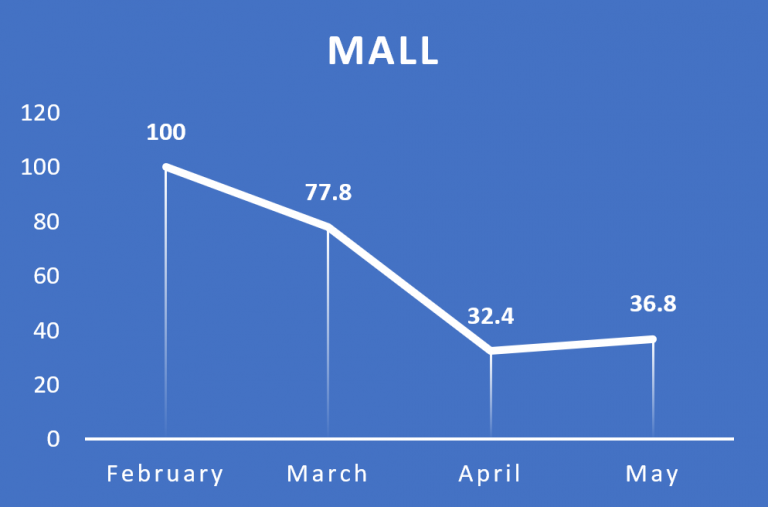
Malls continued to have almost one third of withdrawals as their shops were still not open on May. They are opened in June, so the results of June would be more interesting for this type of ATMs. The transactions are perhaps due to some open shops such as pharmacies and markets in the Malls that drive some human traffic and some administrative personnel.
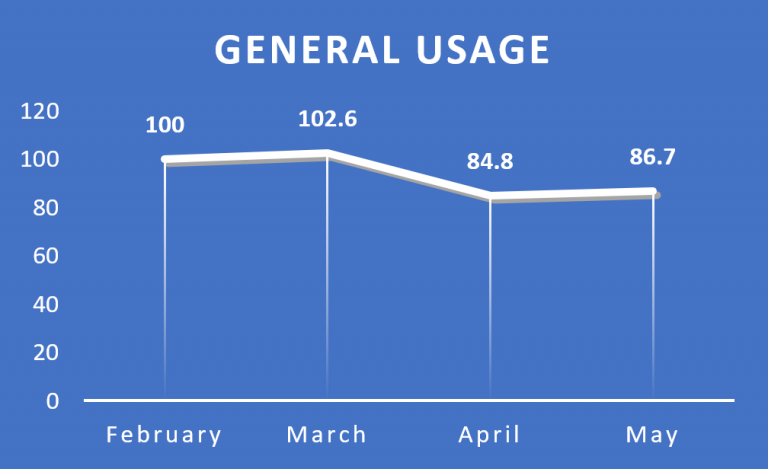
Considering the seasonalities, the numbers are pretty close to each other, so we cannot really deduce any serious pattern differences for these types of ATMs for the time period, except for April and May, there seems to be slight decrease in total amounts possibly due to curfew weekends. The slight increase in May with respect to April could be due to the elderly being allowed on Sunday.

Similar to General Usage ATMs, Hospital type ATMs did not change much during these months. In May, there was a slight increase which is not conclusive. The numbers are very close to February numbers, so for Hospitals, perhaps the bulk of users being health workers, the demand seems to be stable.
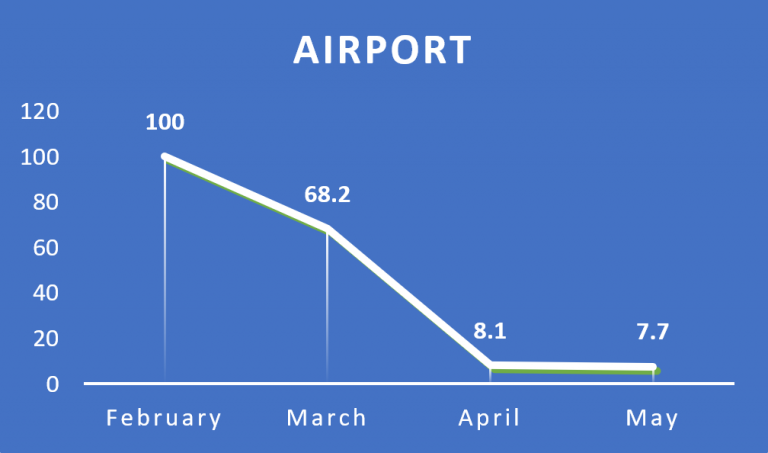
Airport ATMs, the hardest-hit ATM types, declined a little bit more in the month of May. Compared to February, the total withdrawal volume is less than 8%. Almost all flights were grounded in April, and May, but they are expected to resume in June. It would be interesting to see how the numbers would turn out at the end of June.
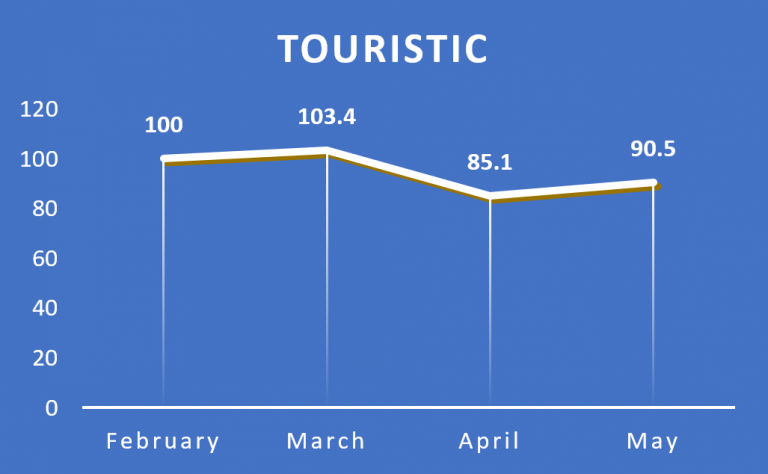
Touristic type ATMs seemed to increase for March and we suspected that some citizens with summer houses moved to their summer homes before curfews started. However, considering the seasonalities being similar to General Usage ATMs, we cannot conclude that Touristic type ATMs usage patterns changed much during this time. In May, there is again no significant changes.

Similar to Airport ATMs, as most travel within the country was also banned or restricted, transportation center ATM usage decreased by more than 60% during this period. In May, there was a slight increase, but it is not conclusive. We should expect more dramatic changes for June as the restrictions on travel shall be lifted.
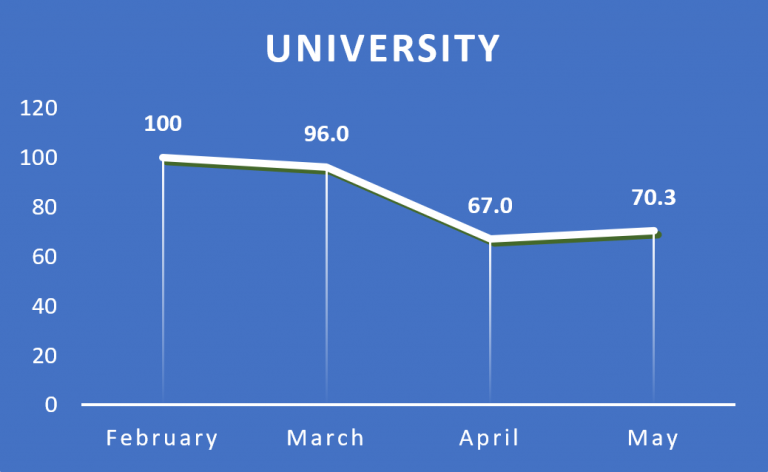
There was about a 30% decrease in cash withdrawals for University ATMs during April and May.
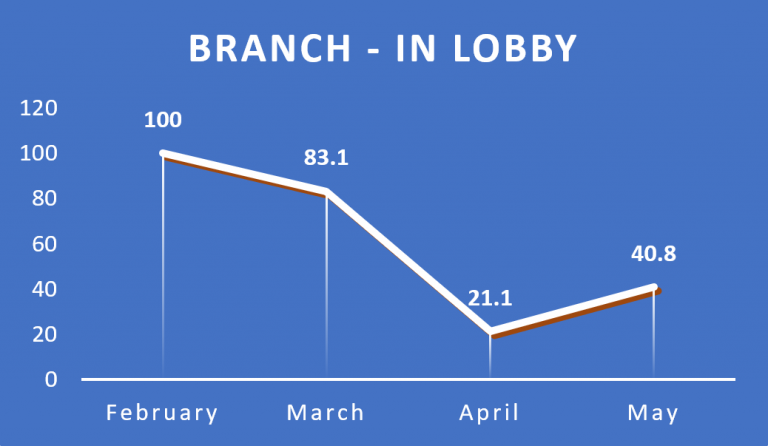
During April, most banks closed down some of their branches and for most of their branches, the working hours during the day were reduced. Hence the in-lobby ATMs realized more than 80% decline in withdrawals. In May, as some branches started to re-open and working hours normalized, withdrawals almost doubled with respect to previous month; however, they are still short of pre-CoViD levels.
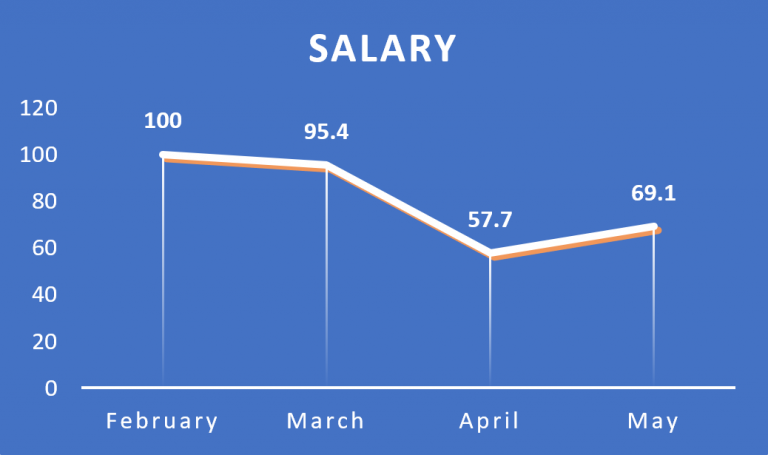
Salary type ATMs declined to 60% in April. This was probably due to the fact that some of the industry (i.e. factories) was shut down completely for couple of weeks in April. In May as the factories began to re-open, we see a 12% increase in withdrawals with respect to April.
Comparison of Curfew Weekends March 2020 to total February 2020
Starting with the second week in April, total curfews for 32 cities in Turkey were imposed. The curfew excluded emergency services and some special permit businesses which needed to be open during the weekends. Below figure depicts how the curfew reflected to ATM usages for these weekends. Taking the first weekend (pre-curfew) as 100%, the figure below compares the curfew weekends to pre-curfew weekend for the city of İstanbul.
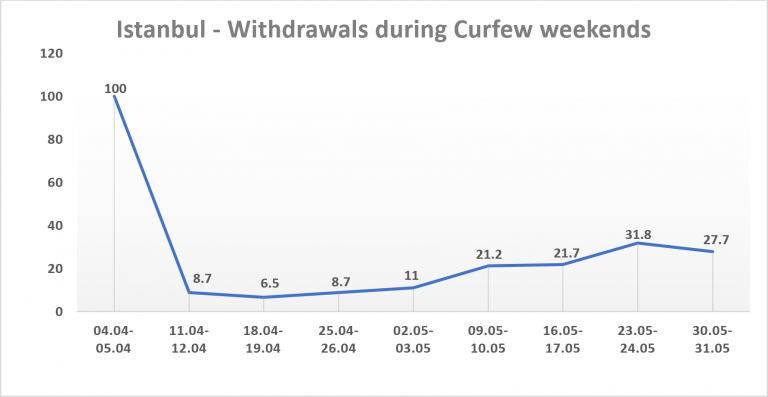
The curfew weekend values in April are very close to each other with an average of 8.7% as compared to pre-curfew weekends. In the month of May, perhaps due to elderly being allowed to be outside on Sundays, the average jumped to 25.6%, about 3 times the averages in April.
Beginning with the month of June, weekend curfews are also lifted. At the end of June, we’ll analyze how the ATM withdrawal patterns changed with respect to curfew and pre-curfew weekends.
Arute Solutions Data Science Team


Leave a Reply